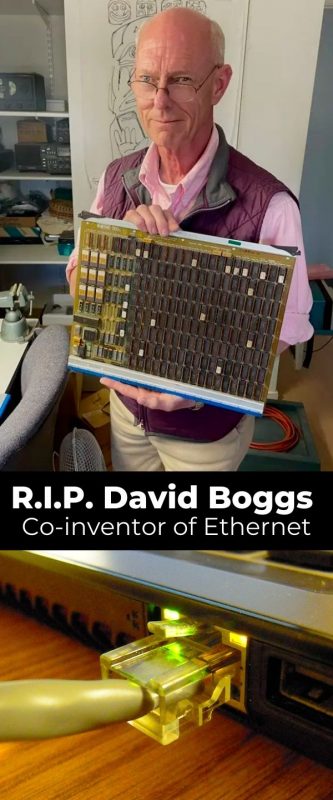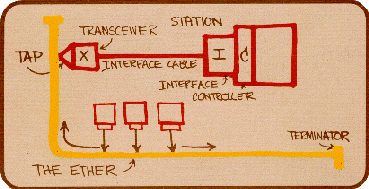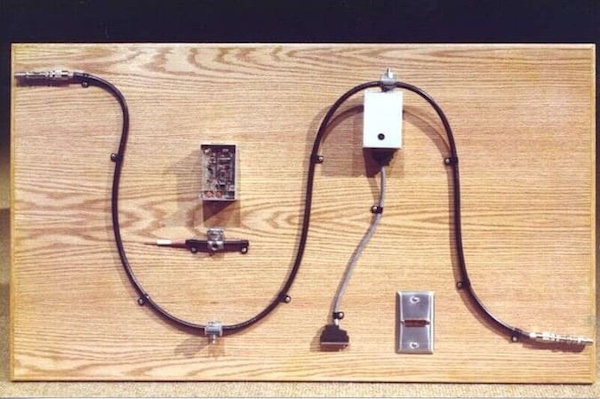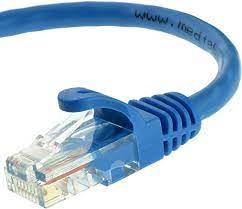
Let’s all take a moment to pay tribute to David Boggs, the electrical engineer and Xerox PARCer who co-created the local networking technology that we all know, love, and probably still use: Ethernet. He died at Stanford Hospital of heart failure on February 19th; he was 71.

When Boggs joined Xerox PARC in 1973, he noticed a techie attempting to network their computers. That techie was Bob Metcalfe, whose name you might know from Metcalfe’s Law (“The value of a communications network is proportional to the number of network users, squared”) or from the company he co-founded (3Com). Together, over the next two years, they would create Ethernet, with Metcalfe being the concept person of the duo, and Boggs turning those concepts into working hardware.

The original Ethernet network was built in 1975 using coaxial cable and could transmit data at 2.94 Mbps. Ethernet has evolved since then, but the underlying principle is still the same:
- Messages on the network are broken into packets, which are the unit of transmission on the network.
- Packets are tagged with the ID of the destination computer.
- Computers on the network on constantly “listening” to the network for packets tagged with their ID.
- If a computer “A” on the network wants to send a message to another computer on the same network, “B”, it first checks the network to see if any other computer on the network is currently transmitting anything:
- If another computer is currently transmitting something, wait a little bit (where “a little bit” is on the order of milliseconds).
- If no other computer is transmitting anything, send a packet that’s marked with the destination computer, “B”.
When you say “Ethernet”, people usually think of this:

But that’s not Ethernet — that’s an CAT-n cable (it could be CAT-5 or CAT-6) with an RJ45 connector. You can also run an Ethernet network on a different cable, such as coax, or even using radio waves. You know radio-wave Ethernet by another name: Wifi.
Thank you, David Boggs, and requiescat in pace.